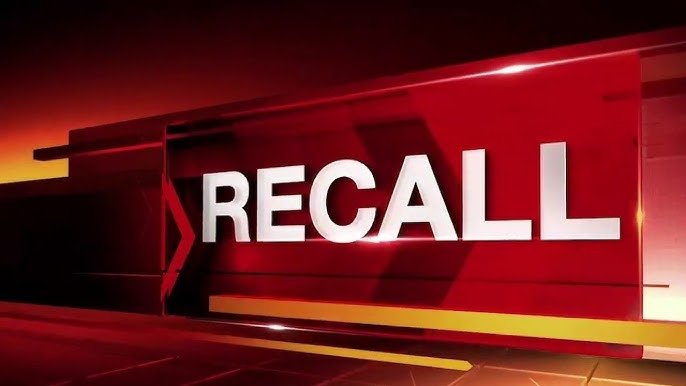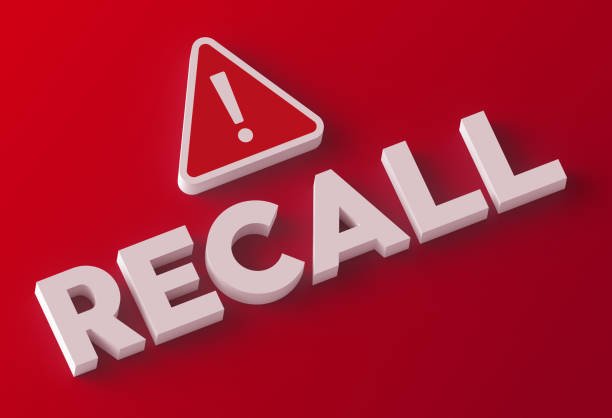Product recalls are an essential aspect of consumer protection, ensuring that faulty or hazardous products are removed from the market quickly. However, the legal framework governing product recalls can be complex. Understanding product recall laws is crucial for businesses and consumers alike to navigate these situations effectively. Whether you are a business owner, manufacturer, or consumer, being familiar with the laws surrounding product recalls can help protect your interests and ensure safety.
In this article, we will explore the intricacies of product recall laws, how they work, who is responsible, and what steps businesses and consumers should take during a recall event.
Also Read: Understanding On-the-Job Injury Lawsuits

What Are Product Recall Laws?
Product recall laws are regulations and procedures that govern the removal or correction of defective or unsafe products from the marketplace. When a product is found to be dangerous or non-compliant with safety standards, manufacturers or regulators must initiate a recall to prevent harm to consumers. These laws are designed to protect public health and safety by ensuring that hazardous products are quickly addressed and that consumers are informed.
In the United States, product recall laws are primarily enforced by regulatory agencies such as the Consumer Product Safety Commission (CPSC), the Food and Drug Administration (FDA), and the National Highway Traffic Safety Administration (NHTSA). These agencies set guidelines on when and how a product recall should be initiated, the responsibilities of manufacturers, and the rights of consumers.
Key Components of Product Recall Laws
Understanding product recall laws requires knowledge of the key components that define how recalls work. Here are some of the critical elements:
1. Manufacturer’s Responsibility
Under product recall laws, the manufacturer is typically responsible for initiating a recall once a product defect or safety risk is identified. This obligation extends to taking corrective actions, notifying consumers, and reporting the recall to relevant authorities. If a product is found to have potential hazards, it is the manufacturer’s duty to ensure that the product is removed from the market, repaired, or replaced.
2. Regulatory Oversight
Government agencies such as the CPSC, FDA, and NHTSA monitor product recalls and ensure that businesses comply with product recall laws. They may also initiate a recall if a manufacturer fails to act or if the risk to consumers is severe. These agencies also keep track of the recall process to ensure it is effective and that consumers are protected.
3. Recall Process
The recall process involves identifying the defective or hazardous product, notifying affected parties (retailers, consumers, etc.), and removing the product from circulation. In some cases, the product may be repaired, replaced, or refunded to the consumer. The manufacturer must keep accurate records of the recall process and work with authorities to ensure compliance with product recall laws.
Also Read: Understanding Birth Injury Legal Action

When Are Product Recalls Initiated?
A product recall can be initiated in various circumstances. Here are some common scenarios when product recall laws come into play:
1. Product Defects
If a product has a design flaw, manufacturing defect, or other issues that make it unsafe for use, the manufacturer is required to recall the product. This may include defects that could lead to injury, illness, or even death.
2. Non-Compliance with Safety Standards
Products that do not meet safety standards set by regulatory agencies must be recalled. For example, toys with small parts that pose a choking hazard or medications that have been found to contain harmful ingredients may be subject to recall.
3. Reports of Injury or Harm
Consumer complaints, reports from healthcare providers, or accident investigations can trigger a recall. When an injury or serious adverse event is reported, regulatory agencies may require a recall to prevent further harm.
4. Voluntary vs. Involuntary Recalls
While manufacturers are required to initiate recalls for defective or hazardous products, some recalls are voluntary. In a voluntary recall, a manufacturer may decide to recall a product even before it is mandated by regulators. This can demonstrate a company’s commitment to consumer safety, but the law still requires the company to follow all procedures for recall.
What Happens During a Product Recall?
When a recall is initiated, several steps take place, both from the perspective of the manufacturer and the consumer:
1. Manufacturer’s Action
The manufacturer must first assess the scope of the recall. This involves identifying which products are affected, determining where the products were sold, and informing retailers and consumers about the recall. Manufacturers must also offer consumers a solution, which could include a refund, replacement, or repair.
2. Consumer Notification
Consumers who have purchased the affected product must be notified. This is typically done via direct communication, such as a letter, email, or phone call, and through public announcements, such as press releases and website updates. Consumers will be informed about the reason for the recall and the steps they need to take.
3. Product Removal
Retailers and sellers are instructed to remove the recalled products from their shelves, online platforms, and warehouses. This ensures that the product does not reach other consumers who might be unaware of the recall.
4. Corrective Action
After the product is removed, the manufacturer must address the defect. Depending on the nature of the problem, this might involve repairing the product, replacing it with a safer model, or offering a full refund to consumers.
Also Read: Misdiagnosis Legal Rights

How Do Product Recall Laws Protect Consumers?
Product recall laws provide several key protections for consumers:
1. Consumer Safety
The primary goal of product recall laws is to protect consumers from unsafe products. By ensuring defective or hazardous items are quickly removed from the market, these laws reduce the risk of injury or harm.
2. Transparency
Recall laws require manufacturers and regulatory agencies to inform the public about recalls and the risks associated with defective products. This transparency allows consumers to make informed decisions and avoid using dangerous products.
3. Compensation and Remedies
Consumers affected by a recalled product are entitled to compensation in many cases. This could involve a refund, a replacement, or coverage for medical expenses if the product caused harm. Product recall laws ensure that manufacturers are held accountable and provide solutions to consumers who have been impacted.
Frequently Asked Questions (FAQs)
1. What is a product recall?
A product recall is when a company removes a defective or dangerous product from the market to protect consumers. This can happen voluntarily or at the request of regulatory agencies like the CPSC or FDA.
2. Who is responsible for initiating a product recall?
In most cases, the manufacturer is responsible for initiating a recall if a product is found to be unsafe. However, regulatory agencies can also enforce recalls if the manufacturer does not act.
3. What are the most common reasons for a product recall?
Product recalls typically occur due to safety hazards, defects in design or manufacturing, non-compliance with regulations, or reports of consumer injuries caused by the product.
4. How are consumers notified about a product recall?
Consumers are typically notified via public announcements, company websites, emails, or letters. Consumers who have purchased the affected product may also receive direct notifications from the manufacturer.
5. What should I do if I have a recalled product?
If you have a recalled product, follow the instructions provided by the manufacturer. This may include returning the product for a refund, repair, or replacement. Always stay updated on recall information through the CPSC or FDA websites.
Conclusion
Understanding product recall laws is vital for both businesses and consumers. These laws are designed to ensure the safety of products in the market and protect consumers from harm. If you are a manufacturer or business owner, knowing the steps involved in a recall can help you act quickly and responsibly when a product is found to be defective. As a consumer, staying informed about product recalls ensures your safety and helps you take appropriate action when needed.
By adhering to product recall laws, companies can demonstrate their commitment to consumer safety, while consumers can rest assured that there are systems in place to protect them from unsafe products.
1 thought on “Understanding Product Recall Laws: A Comprehensive Guide”